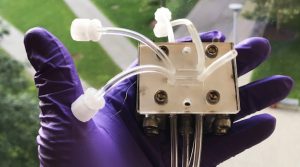Categories:
Energy
/
General Market Commentary
Topics:
General Energy
/
General Market Commentary
Scientists develop system to remove contaminants from nuclear wastewater
Researchers at the Massachusetts Institute of Technology have developed a method to reduce the volume of contaminated water that needs to be disposed of in nuclear plants.
In a paper published in the journal Environmental Science and Technology, the scientists said that the mechanism concentrates the radioactive isotopes that contaminate the water used for cooling the plants and allows for the rest of the water to be recycled through the plant’s cooling system.
The method makes use of a process called shock electrodialysis, which uses an electric field to generate a deionization shockwave in the water. The shockwave pushes the electrically charged particles, or ions, to one side of a tube filled with charged porous material, so that concentrated stream of contaminants can be separated out from the rest of the water.

A small-scale device, seen here, was used in the lab to demonstrate the effectiveness of the new shockwave-based system for removing radioactive contaminants from the cooling water in nuclear powerplants. (Image courtesy of MIT).
During the course of their experiments, the group discovered that two radionuclide contaminants—isotopes of cobalt and caesium— can be selectively removed from water that also contains boric acid and lithium. After the water stream is cleansed of its cobalt and caesium contaminants, it can be reused in the reactor.